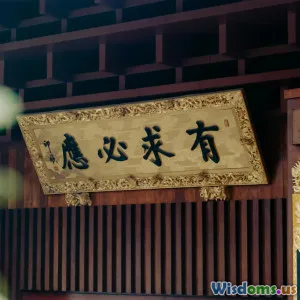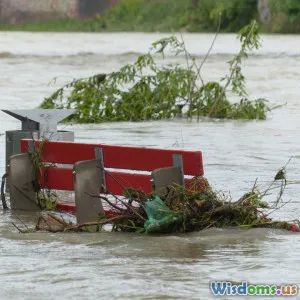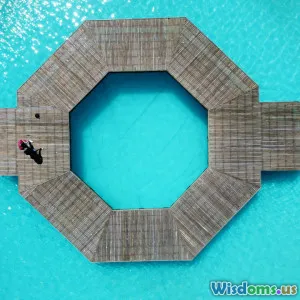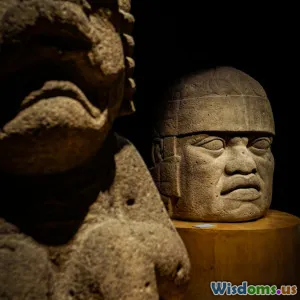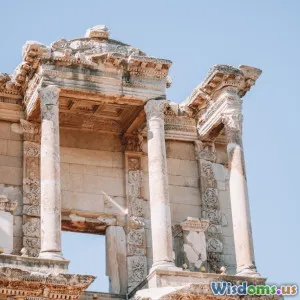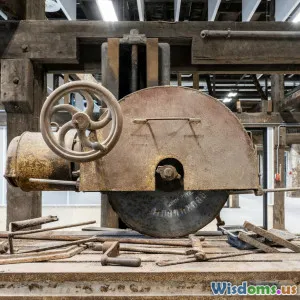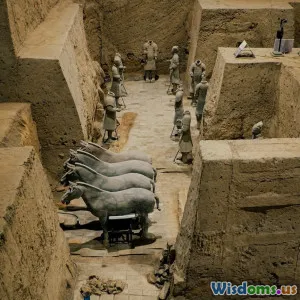
What Lies Beneath The Secret Tombs of Chinas Terracotta Army
8 min read Explore the hidden wonders and mysteries beneath China's Terracotta Army tombs and what they reveal about an ancient empire. (0 Reviews)
What Lies Beneath The Secret Tombs of China's Terracotta Army
Introduction
Few archaeological discoveries have captured the imagination of the world quite like China's Terracotta Army. Unearthed in 1974 near the city of Xi'an, this vast collection of life-sized clay soldiers immortalized the might of Emperor Qin Shi Huang, the first Emperor of a unified China. But as remarkable as the army itself is, beneath and around this extraordinary find lie secret tombs and hidden chambers that hold even deeper mysteries. What treasures, artifacts, or knowledge might still be sealed within the subterranean halls? This article explores what lies beneath the surface, shedding light on these enigmatic tombs that reveal much about ancient Chinese civilization, their beliefs about the afterlife, and the imperial quest for immortality.
The Legacy of Emperor Qin Shi Huang and the Terracotta Army
Emperor Qin Shi Huang (259–210 BCE) unified warring Chinese states into one empire. His legacy is both monumental and tragic—famed for founding the Qin dynasty and initiating projects such as the Great Wall, but also known for his authoritarian rule.
To accompany his eternal reign, Qin commissioned an army made from terracotta to guard his mausoleum. Discovered in three major pits, this army consists of over 8,000 soldiers, cavalry, chariots, and weapons. Yet this force is guarding something much more remarkable beneath—an elaborate necropolis that remains largely unexcavated.
The Ancient Necropolis: More Than Meets the Eye
The Mausoleum Complex
Emperor Qin’s tomb is more than just a burial chamber; it is an immense complex roughly 2.15 square kilometers in size, which took decades to build using the labor of hundreds of thousands. Ancient texts like Sima Qian’s Records of the Grand Historian provide fascinating descriptions of the tomb, portraying it as a celestial model of the empire—complete with rivers of mercury and palaces representing the emperor’s earthly and heavenly domains.
Mercury Rivers and Technological Marvels
Excavations outside the tomb have detected unusually high mercury concentrations inside the mound believed to be the tomb itself, aligning with historical accounts. This suggests that the burial chambers may be sealed behind a mercurial barrier—a preservation method and symbol of eternal life. Scientists hypothesize that such an environment could devastate traditional excavation tools and raise considerable risks.
The Secret Tombs: Hidden Chambers and Subterranean Mysteries
Unexplored Inner Chambers
Despite the grand scale, the actual tomb remains unopened, with only minor archaeological probes so far. The Chinese government has exercised caution over large-scale excavation due to concerns about preservation and potential damage.
Archaeologists suspect the tomb houses not only Qin Shi Huang himself but also a panoply of artifacts intended to serve the emperor in the afterlife. These could include jade burial suits, ornamental items, astronomical instruments, and intricate replicas of palatial architecture.
Insights from the Surrounding Tombs
Beyond Qin’s tomb, several smaller royal and noble tombs surround the Terracotta Army pits, each providing clues about ancient burial customs. For instance, the tomb of General Meng Tian includes symbolic objects that reveal military stratagems and imperial ideology. Moreover, analysis of these tombs shed light on object placement and funerary rites of the Qin dynasty.
Archaeological Challenges and Future Prospects
Preservation Versus Exploration
The fundamental challenge with exploring the secret tombs beneath the Terracotta Army site is balancing excavation with preservation. Past experience shows that exposure to air causes rapid deterioration of the terracotta figures and pigments, which means any attempt to open the tomb carefully must innovate in conservation methods.
Dr. Zhao Kangmin, who led the first vault excavation of the Terracotta Army pits, once noted, “The chest is full of secrets—but every key to open it demands cutting-edge technology and patience.”
Cutting-Edge Technologies
Modern technologies such as non-invasive ground-penetrating radar, 3D tomography, and micro-chemical detectors are playing a growing role. These tools help archaeologists map hidden chambers and analyze chemical composition without disturbing the site, enabling future plans to carefully navigate the tomb.
The possibility of using robotic explorers—a practice pioneered in other tombs such as Egypt’s—may revolutionize access, allowing glimpses inside without human entry.
What These Tombs Reveal About Ancient China
The Terracotta Army and its tomb complex are a testament to Qin dynasty ambitions—melding artistry, military might, spiritual beliefs, and technological innovation. The secrets beneath these tombs deepen our understanding of:
- Imperial Authority: The grandeur reflects the emperor’s absolute power and divine status.
- Death and Afterlife Beliefs: The use of terracotta soldiers to protect and serve after death illustrates ancient Chinese concepts of immortality and loyalty.
- Craftsmanship and Resources: The scale of the site exemplifies advanced techniques in metallurgy, sculpture, and urban planning of the era.
Moreover, these tombs connect with broader themes in archaeology concerning ancient civilizations' relationships with mortality and legacy.
Conclusion: An Unfolding Story
The secret tombs beneath China’s Terracotta Army continue to fascinate archaeologists and historians alike. Hidden for over two millennia, they guard tantalizing clues about one of history’s most influential emperors and the empire he forged. As modern technology advances and research deepens, the mysteries held in the subterranean vaults may soon be unveiled—potentially rewriting chapters of Chinese history and offering invaluable insights into the minds of ancient civilizations.
For now, the silent soldiers stand watch, inviting us to explore, understand, and appreciate the splendour and secrets that lie beneath.
References:
- Sima Qian, Records of the Grand Historian (trans. Burton Watson)
- Loewe, M. and Shaughnessy, E.L. (eds.), The Cambridge History of Ancient China
- Portal, J. The First Emperor: China's Terracotta Army
- Publications by the Shaanxi Cultural Relics Bureau on ongoing excavation reports
- Modern scientific studies in Science Advances on mercury levels in the mausoleum region
Rate the Post
User Reviews
Popular Posts











